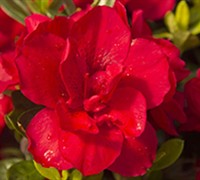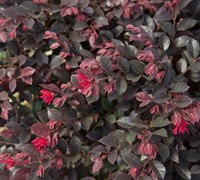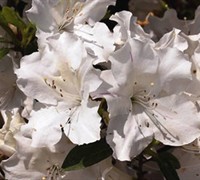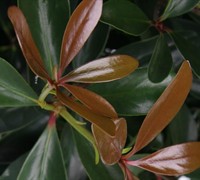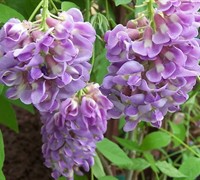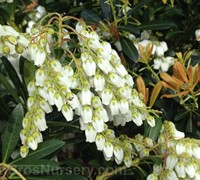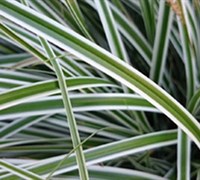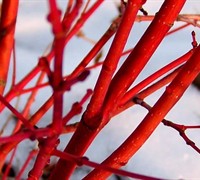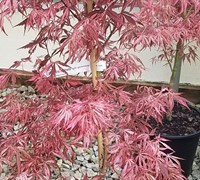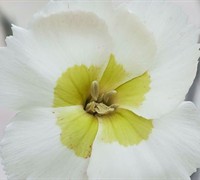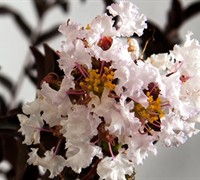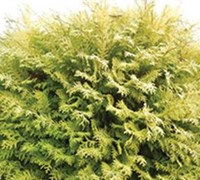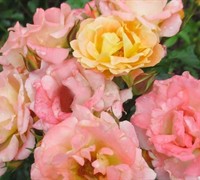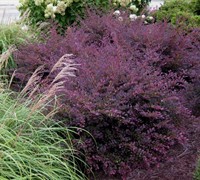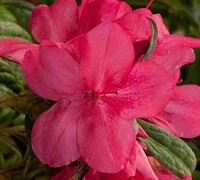All About Azaleas
Rhododendrons and azaleas are arguably the South’s favorite shrubs. Many people think of them as entirely different plants, but they both belong to the genus Rhododendron, which comprises more than 800 species and 10,000 named selections. Even to the untrained eye, one difference between the two groups is obvious: rhododendrons generally have much larger leaves. From a technical standpoint, rhododendron flowers are bell shaped and have ten or more stamens, while azalea blooms are typically funnel shaped and have five stamens.
By making their choices carefully, gardeners in almost every part of the South can enjoy some of these plants, even if that means growing them in containers. Rhododendrons generally do better in the Upper and Middle South, though a number of selections thrive in the Lower South. Azaleas, however, are more accommodating; with the necessary attention to soil, light, and proper selection, they can be grown throughout the South.
Rhododendrons and azaleas have much the same basic requirements for soil and water. They need acid, well-drained, organically enriched soil that should neither get too dry nor remain soggy. Planting in heavy clay is a no-no: root rot often ensues, indicated by yellowing, wilting foliage and collapse of the plant. Planting in limy, alkaline soil is another mistake; lack of iron quickly results in chlorosis (yellow leaves with green veins). Alkaline soil has not, however, discouraged azalea lovers in Texas and Oklahoma. The recommended practice there is to build raised beds 15–18 in. deep and fill them with a half-and-half mixture of finely milled bark and coarse sphagnum peat moss (be sure to mix the two thoroughly with water before filling the beds). Irrigating with alkaline water will slowly raise the pH; to keep it in the desired range of 5.0–6.0, prepare a mixture of 3 parts garden sulfur to 1 part iron sulfate, then apply it at the rate of 1 pound per 100 sq. ft. of garden bed. This should lower the pH by one point.
Plant azaleas and rhododendrons with the top of the root ball slightly above soil level. Don’t cultivate around these plants, as they have shallow roots. Because they absorb water through their foliage, wet both the leaves and root zone when you water. Overhead watering with sprinklers works well, but to prevent fungal diseases do this in morning so that leaves dry by afternoon. Avoid drip irrigationit doesn’t wet the root system uniformly.
In spring, just after the blooms fade, apply mulch and fertilize with a controlled-release, acid-forming fertilizer such as cottonseed meal or commercial azalea/camellia food. Do not mulch in fall; this will hold heat in the soil and delay the onset of dormancy, increasing the chances of winter damage. And don’t fertilize before bloomyou’ll encourage leafy growth at the wrong time.
Insects and diseases seldom bother healthy, vigorous plants. However, rhododendrons growing in heavy clay often fall victim to Phytophthora, a deadly soil-borne fungus that causes dieback. Azaleas growing in full sun are often plagued by sucking insects called lace bugs.
The rhododendrons listed here are all evergreen; azalea species and hybrids may be evergreen or deciduous. Plant sizes vary somewhat within groups, but most individual plants are roughly equal in height and width.
Pruning rhododendrons is simplejust follow these general guidelines. Tip-pinch young plants to make them bushy; prune older, leggy plants to restore shape by cutting back to a side branch, leaf whorl, or cluster of latent buds. Do any extensive pruning in late winter or early spring. Pruning at this time will sacrifice some flower buds, but the plant’s energies will be diverted to latent growth buds, which will then be ready to push out their new growth early in the growing season. You can do some shaping while plants are in bloom; use cut branches in arrangements. To prevent seed formation, which can reduce next year’s bloom, clip or break off spent flower trusses, taking care not to damage growth buds at base of each truss.
Pruning rhododendrons is simplejust follow these general guidelines. Tip-pinch young plants to make them bushy; prune older, leggy plants to restore shape by cutting back to a side branch, leaf whorl, or cluster of latent buds. Do any extensive pruning in late winter or early spring. Pruning at this time will sacrifice some flower buds, but the plant’s energies will be diverted to latent growth buds, which will then be ready to push out their new growth early in the growing season. You can do some shaping while plants are in bloom; use cut branches in arrangements. To prevent seed formation, which can reduce next year’s bloom, clip or break off spent flower trusses, taking care not to damage growth buds at base of each truss.
Kinds of Rhododendrons
Most people know rhododendrons as big, leathery-leafed shrubs with rounded clusters (“trusses”) of stunning white, pink, red, or purple blossoms. These are primarily hybrids of catawba rhododendron, R. catawbiense, which is native to the Appalachians. But there are also dwarfs just a few inches tall, giants that reach 40 ft. or even 80 ft. in their native Southeast Asia, and a host of species and hybrids of intermediate size. Hybrids with Asian parentage may display exotic colors of yellow, apricot, and salmon; unfortunately, plants with these colors are often less tolerant of the South’s summer heat.
The following sections place named selections in categories to help you decide whether they’re suited to your garden and how to employ them.
Heat-tolerant hybrids. These are some of the selections that accept the long, hot summers of the Lower South: ‘A. Bedford’, ‘Album Elegans’, ‘Anah Kruschke’, ‘Anna Rose Whitney’, ‘Belle Heller’, ‘Caroline’, ‘Cheer’, ‘Chionoides’, ‘Cynthia’, ‘English Roseum’, ‘Fastuosum Flore Pleno’, ‘Ginny Gee’, ‘Holden’, ‘Janet Blair’, ‘Jean Marie de Montague’, ‘Lee’s Dark Purple’, ‘Nova Zembla’, ‘Purple Splendour’, ‘Roseum Elegans’, ‘Scintillation’, ‘Trude Webster’, ‘Vulcan’.
Cold-hardy hybrids. Most of the hybrids listed here are quite cold hardy. The following can take temperatures to at least –20°F: ‘Album Elegans’, ‘America’, ‘Boule de Neige’, ‘Catawbiense Album’, ‘Catawbiense Boursault’, ‘English Roseum’, ‘Nova Zembla’, ‘PJM’, ‘President Lincoln’, ‘Ramapo’, ‘Roseum Elegans’.
Vireyas for indoors and frost-free areas. The Vireya rhododendrons, from the tropics of Southeast Asia, manage nicely in frost-free and nearly frostless zones. They are also fine container plants (even indoors), so they can be grown in colder zones if brought inside for the winter. They need an especially fast-draining potting mix (many species are epiphytes in the wild); a combination of equal parts peat moss, ground bark, and perlite works well. Typically, plants flower on and off throughout the year rather than in one blooming season. They bear waxy-textured blossoms in exciting shades of yellow, gold, orange, vermilion, salmon, and pink, plus cream, white, and bicolors. Species, named hybrids, and unnamed seedlings are offered by some specialty growers.
Among the best ones you are likely to find are R. aurigeranum (a hybrid of R. brookeanumcommonly listed as ‘Gracile’), R. javanicum, R. konori, R. laetum, R. lochae, R. macgregoriae,and the hybrids ‘George Budgen’ (orange yellow), ‘Ne Plus Ultra’ (a red-flowering hybrid between R. laetum and R. zoelleri), and ‘Taylori’ (pink).
Low-growing rhododendrons. These selections grow to 3 ft. tall or less: ‘Blue Diamond’, ‘Bow Bells’, ‘Dora Amateis’, ‘Elizabeth’, ‘Ginny Gee’, ‘Molly Ann’, ‘Patty Bee’, ‘Ramapo’, ‘Sapphire’, ‘Scarlet Wonder’.
Rhododendrons in Clay or Alkaline Soil? They don’t like it. Planting in raised beds that are 1–2 ft. above the original soil level is the simplest way to give these plants the conditions they need. Liberally mix organic material into top foot of native soil, then fill bed above it with a mixture of 50 percent organic material, 30 percent soil, 20 percent builder’s sand. This mixture will hold air and moisture while allowing excess water to drain.
Thanks to Steve Bender and Southern Living Magazine for this article

